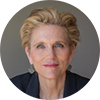Download PDF

Margaret Thatcher didn’t value consensus much. While giving a lecture in 1981, the Iron Lady proclaimed, “To me, consensus seems to be the process of abandoning all beliefs, principles, values, and policies. So it is something in which no one believes and to which no one objects.”
Consensus, however, has merit in medicine. Consensus statements are often developed to provide guidance when information is evolving and standards of care are not clear. They are described as “a snapshot in time,”1 as they are developed during a period of change marked by gaps in information.
How are the statements created? Typically, a panel of experts convenes to review the evidence base, identify research gaps, and make recommendations. The resulting statement is an authoritative community-based document that synthesizes emerging information for physicians.
For ophthalmology, recent statements in 2 subspecialties caught my eye. In both areas, new information and new technology introduced variations in care—and, in both, a consensus panel provided guidelines.
Alison Skalet, an ocular oncologist in Portland, Oregon, observed that no guidelines existed for screening children with a family history of retinoblastoma. “We were concerned that this might lead to late diagnosis in some children, while others with very low risk were perhaps undergoing overly aggressive screening. In addition, genetic testing for retinoblastoma, which helps to stratify risk, wasn’t uniformly available in the United States.”
Ophthalmology published the statement that grew out of conversations about genetic testing and screening protocols for children with a risk of retinoblastoma.2 The corresponding author of the paper, Patricia Chévez-Barrios, an ophthalmic pathologist in Houston, described the intensive 2-year process of developing the guidelines. “Alison discussed the possibility of a consensus statement with her colleagues Dan Gombos and Jonathan Kim, and with my help developed a panel with a representative from each of the major North American retinoblastoma centers.” The process included emails, conference calls, and face-to-face meetings. Later, the Academy and several other medical societies were invited to endorse the statement and suggest any needed changes to the final manuscript. Dan, an ocular oncologist who also practices in Houston, described the resulting consensus statement as a “highly collaborative effort among experts from across the United States and Canada.”
On the cataract front, a few years ago, the FDA requested broad input on IOL performance and defining outcomes. Samuel Masket, a cataract surgeon in Los Angeles, described the role of the consensus panel. “Because of innovation in IOL technology, especially in premium IOLs, the FDA needed updated safety and performance endpoints, so the Academy formed a task force of experts to review the existing literature, define gaps in the literature, and make recommendations.” The work was published last year in a series of reports in Ophthalmology.3
Sam is most intrigued by the current project—involving the Academy, the FDA, the Rand Corporation-UCLA, and members of the ophthalmic IOL manufacturing community—to develop an instrument that evaluates Patient Reported Outcomes (PROs) of premium lenses. This is truly collaborative work that emphasizes outcomes from the perspective of the patient.
It should be noted that consensus statements are not algorithms for care. In ophthalmology, they do not carry the weight of a Preferred Practice Pattern. Even so, they can help forge some clarity during times of change. Perhaps one of the most important functions of a consensus work group is to facilitate a discussion, not just with the experts, but with the entire ophthalmic community.
With the increased rate of change in medical knowledge, the role of consensus statements will grow. Even Margaret Thatcher might have agreed.
___________________________
1 De Boeck K et al. J Cyst Fibrosis. 2014:13(5):495-498.
2 Skalet AH et al. Ophthalmology. Published online Oct. 18, 2017.
3 See the January 2017 issue of Ophthalmology, pp. 133-146.